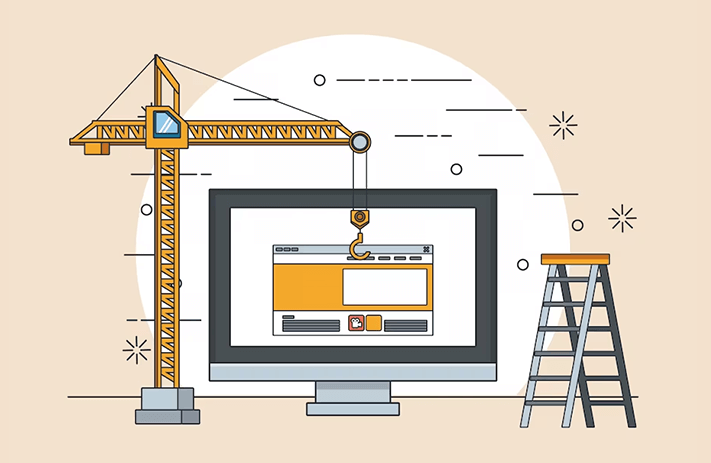Advanced Construction Management Software for Streamlined Projects
Advanced Building And Construction Administration Software Program: Enhancing Performance and Cooperation in the Market
In an industry where precision and efficiency are critical, the combination of sophisticated building and construction management software has revolutionized the way projects are intended, executed, and kept track of. By supplying real-time project tracking capacities, boosted source allowance features, and smooth interaction systems, these software application services have become crucial devices for building experts aiming to boost their performance and foster stronger synergy.
Advantages of Advanced Building Software
The utilization of sophisticated building and construction software application significantly improves performance and project end results within the building and construction market. With attributes like automated scheduling, real-time partnership devices, and data analytics, task managers can a lot more effectively plan, track, and display task progress.
Furthermore, advanced building and construction software helps improve interaction and cooperation among task stakeholders. With centralized platforms for sharing job records, tracking adjustments, and communicating updates, teams can function a lot more cohesively towards typical task objectives. This fosters far better decision-making, reduces the chance of errors, and improves overall job high quality.
Additionally, progressed building and construction software program offers insights through data analytics that can help determine patterns, enhance processes, and alleviate dangers. By leveraging data-driven intelligence, building companies can make more informed decisions, adjust to transforming task characteristics, and ultimately drive better project outcomes. Overall, the benefits of innovative building and construction software program contribute in improving productivity, collaboration, and project success within the building and construction sector.
Real-Time Task Tracking Capabilities
With the smooth assimilation of real-time job tracking capabilities, construction teams can successfully check progression, improve decision-making, and guarantee project timelines are met. Real-time task monitoring enables stakeholders to access current info on various facets of the building and construction job, including job completion status, source allotment, and potential traffic jams. This level of openness promotes collaboration amongst employee, subcontractors, and customers, resulting in improved interaction and quicker problem resolution.
In addition, real-time project monitoring supplies task supervisors with the required information to make enlightened decisions promptly. By having split second access to key efficiency indications and job metrics, supervisors can determine issues early, implement restorative measures, and enhance task workflows. This positive approach assists in protecting against delays, lowering costs, and inevitably enhancing total project effectiveness.

Boosted Source Allocation Features
Making use of innovative resource allotment tools simplifies construction job administration processes and Read Full Article optimizes workforce effectiveness. These functions make it possible for task supervisors to assign tasks, equipment, and materials with precision, making sure that sources are made use of properly (construction software). By having a central system that gives real-time presence right into source schedule and needs, construction groups can make educated decisions immediately, preventing delays and price overruns
Improved resource allocation features likewise promote much better partnership among staff member. With clear jobs and clear resource circulation, every private understands their duty and obligations, cultivating synergy and accountability. This leads to improved communication and coordination, ultimately boosting efficiency and job end results.

Improved Interaction Platforms
Enhancing interaction platforms in building and construction administration software program significantly boosts job control and efficiency. By incorporating features such as real-time messaging, documents sharing, and task jobs, groups can collaborate effortlessly no matter their physical places. With boosted communication systems, stakeholders can receive immediate updates, share essential records, and discuss job information immediately, bring about quicker decision-making procedures.
Furthermore, these sophisticated interaction tools enable for far better transparency and responsibility within construction tasks. Staff member can track development, give feedback, and address issues immediately, fostering a much more joint and effective work environment. Furthermore, having actually systematized interaction channels within the building administration software program lowers the threat of miscommunication and ensures that all staff member are on the same page.
Improving Process for Effectiveness
Reliable operations simplifying is critical in enhancing performance within building management software application systems. By carrying out structured process, building business can get rid of bottlenecks, decrease errors, and make sure that jobs advance smoothly from beginning to end. One means to attain this is by automating recurring jobs such as task scheduling, resource allocation, and progress monitoring. Automation not just saves time yet additionally lessens the danger of human error, leading to more reliable job shipment. construction mangement software.
Additionally, integrating different elements of project monitoring, such as budgeting, file monitoring, and communication, right into a single system can better improve operations. This assimilation permits real-time collaboration and information sharing among group members, removing the need for hands-on information entrance and ensuring that everybody is dealing with the most updated information.

Final Thought
To conclude, advanced building monitoring software uses countless benefits such as real-time job monitoring, enhanced resource allowance, boosted communication platforms, and streamlined workflows. These attributes add to increased efficiency and partnership within the sector. By using this technology, construction companies can enhance their procedures, allocate resources much more successfully, and promote far better interaction among employee. On the whole, progressed construction software plays an important function in boosting efficiency and success in construction projects.